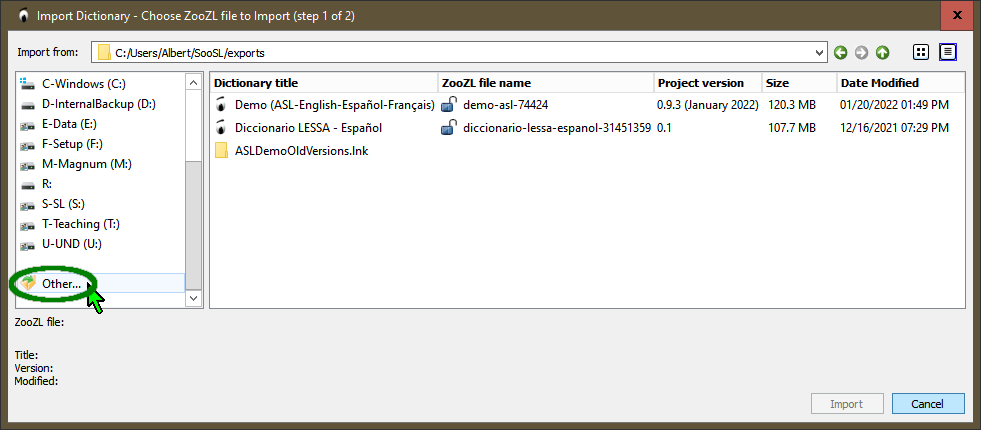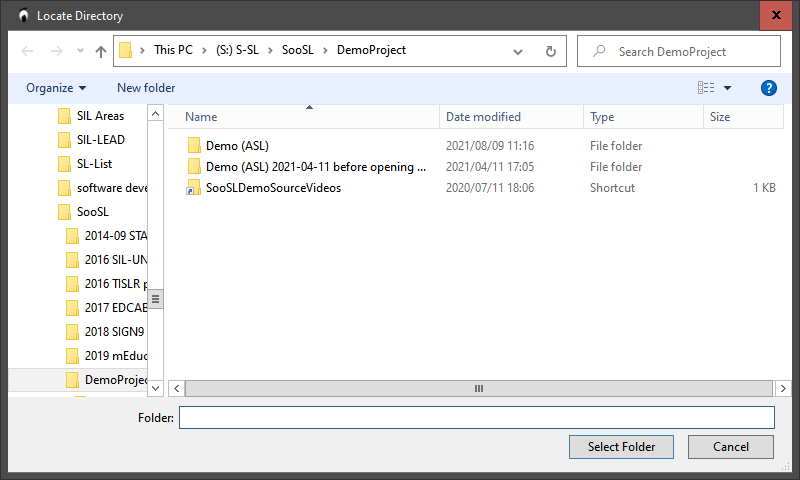When you create, open, import, export or delete a dictionary project, SooSL provides special dialogs that help you work with SooSL dictionaries. They make it easier to find and open SooSL dictionaries. However, they are limited: they don't give you full access to all files on your computer or on your local area network (LAN). They also don't let you create new folders. To get full access to your files and folders, you can open up a regular folder dialog. You get to the regular folder dialog through one of SooSL's special dialogs.
First open one of SooSL's special dialogs by clicking ![]() Tools and then
Tools and then ![]() Open dictionary,
Open dictionary, ![]() Import dictionary,
Import dictionary, ![]() Export dictionary or
Export dictionary or ![]() Delete dictionaries. You can also open a special dialog when setting up a new dictionary by clicking on the
Delete dictionaries. You can also open a special dialog when setting up a new dictionary by clicking on the  button under "STORE DICTIONARY WHERE?". After the dialog opens, scroll down in the list of folders (directories) on the left. Click
button under "STORE DICTIONARY WHERE?". After the dialog opens, scroll down in the list of folders (directories) on the left. Click ![]() "Other...". (The dialog below is for importing a dictionary; the other dialogs look similar.)
"Other...". (The dialog below is for importing a dictionary; the other dialogs look similar.)

After you click "Other...", you will see a Locate Directory dialog (sometimes called Locate Dictionary Directory). It gives you a more powerful way to choose a folder (directory).

This is a regular dialog from your operating system. It will look different on Windows, Mac, and on different versions of Linux. The picture above shows how it looks on Windows.
You can use this dialog to move around your computer and find the folder (directory) you want, the same way as in other programs. You can use it to create a new folder. You can use it to open dictionaries on other computers on your local network (see the topic about working with network (LAN) locations).
Choose a folder that is just above the dictionary folder that you are looking for. Don't choose the dictionary folder itself (or you will get confused). Once you have found the folder you want, click Select Folder. You will go back to SooSL's special file dialog for open, import, export, or delete or for choosing the location of a new dictionary. Then you can select the dictionary or dictionary location.
Created with the Personal Edition of HelpNDoc: 5 Reasons Why a Help Authoring Tool is Better than Microsoft Word for Documentation